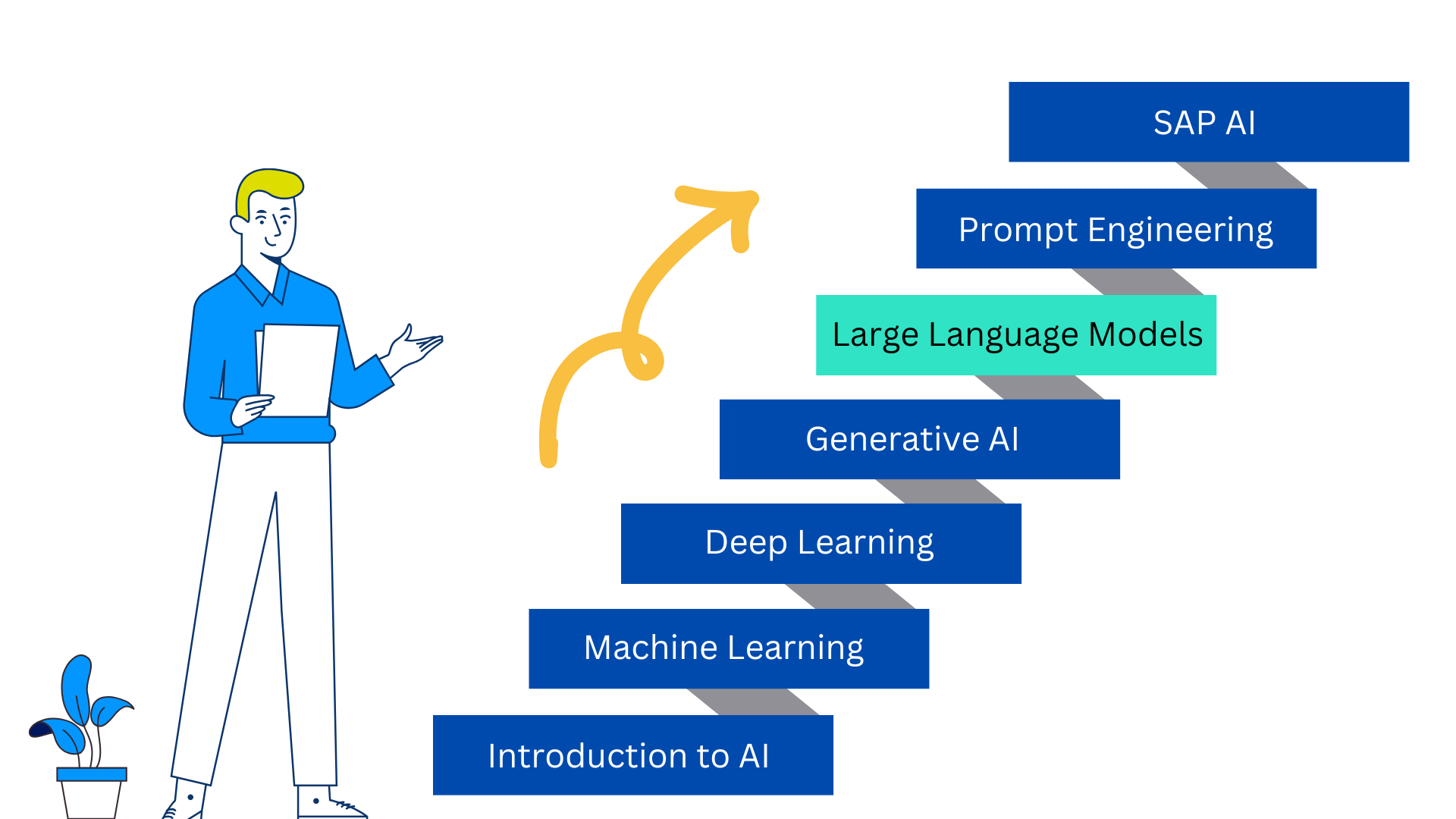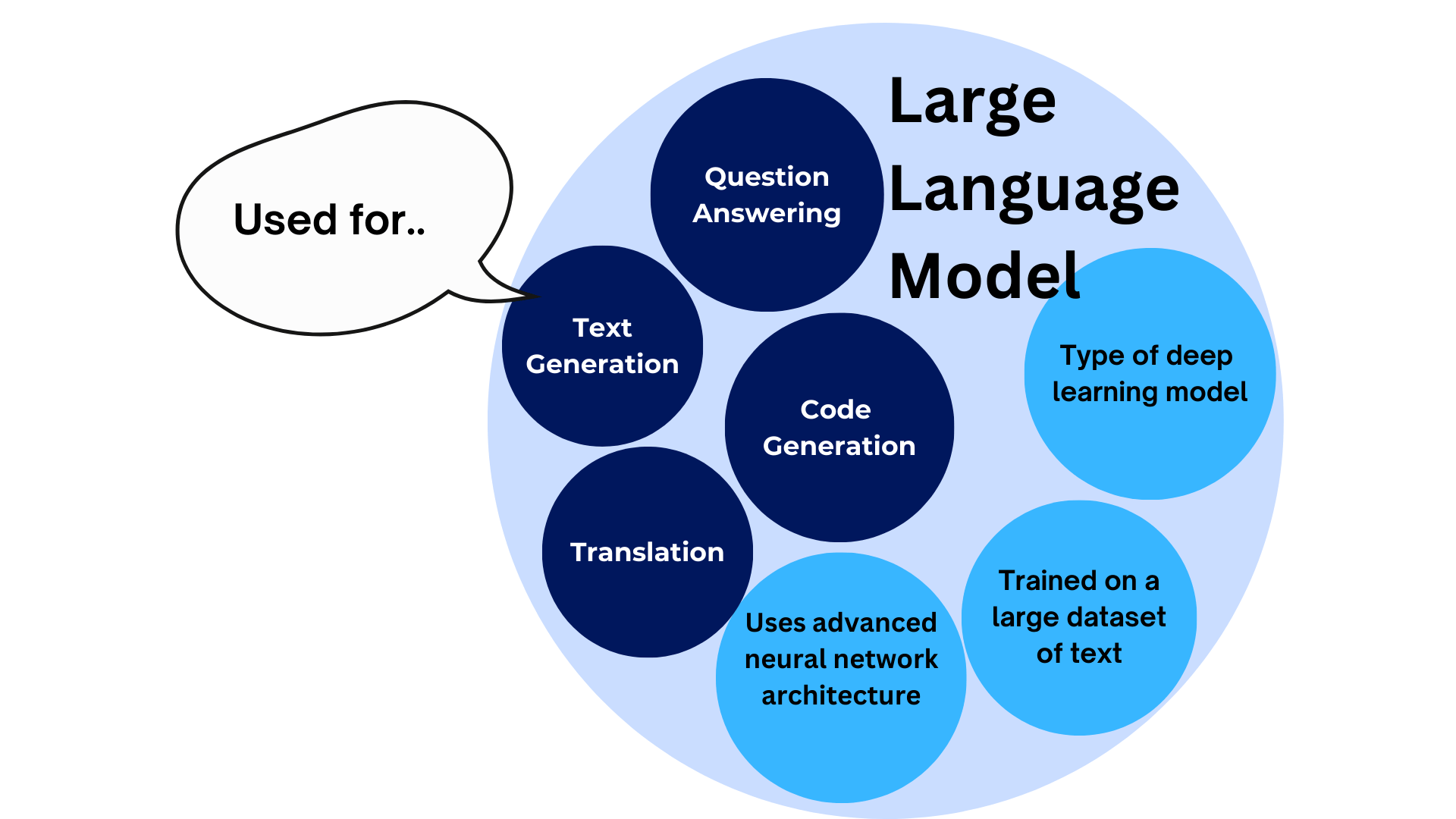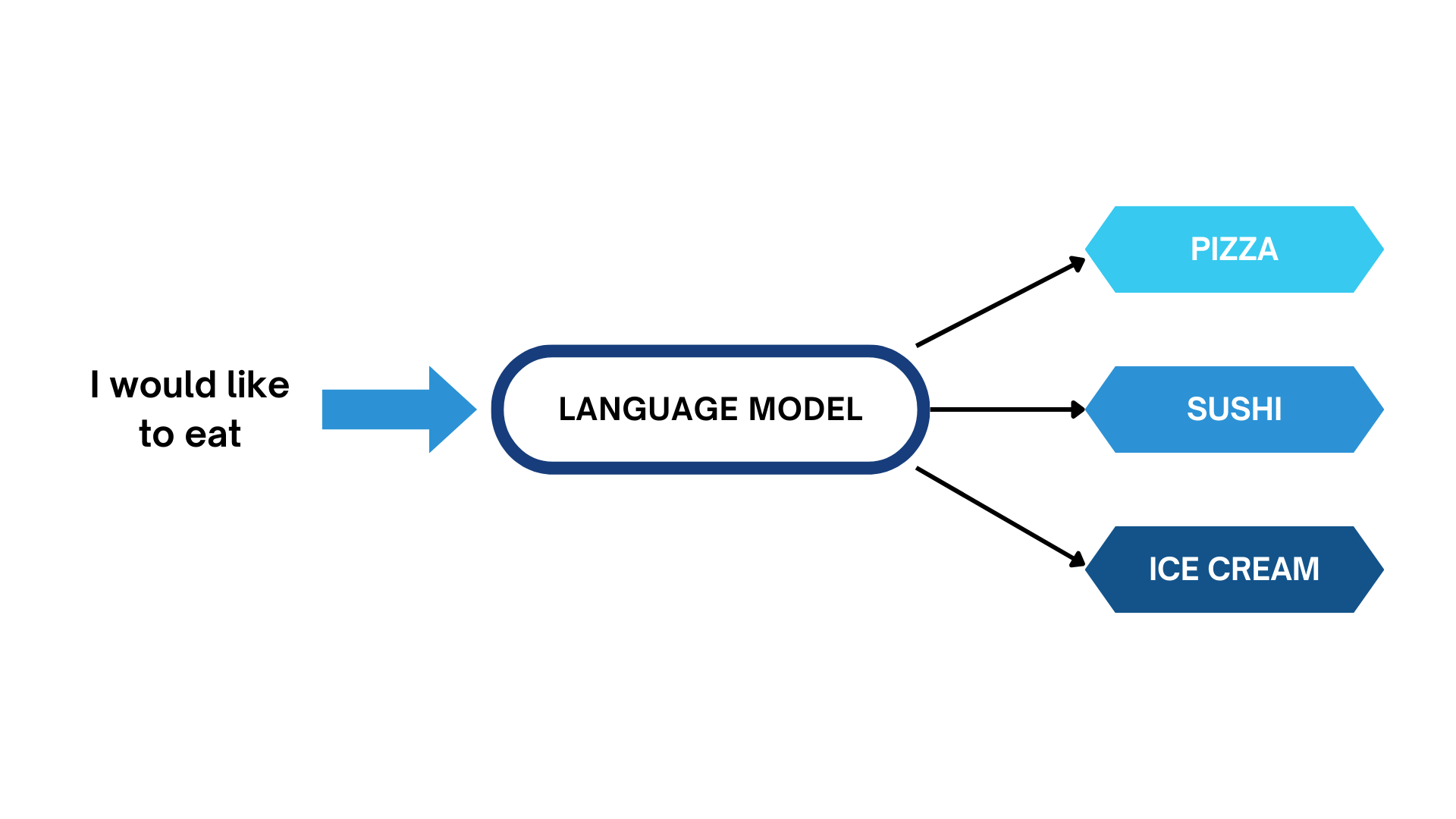Kickstart Your Journey with SAP Artificial Intelligence: Part 5 – What Are Large Language Models (LLMs)?
Introduction
From the previous blogs you’ve learned the basics of Artificial Intelligence (AI), explored how machines can learn through Machine Learning (ML), taken a deeper dive into Deep Learning (DL), and discovered how Generative AI can create new and original content.
Now, we’re going to take it a step further by focusing on Large Language Models—a specific and revolutionary application of Generative AI that is transforming how machines understand, process, and generate human language. Let’s explore how all the concepts you’ve learned so far come together to power these cutting-edge models!
This 7 part blog series is designed for anyone who wants to start learning about SAP AI. No matter what your job is or what you do, understanding the basics of Generative AI how it connects to SAP is a smart choice.
In this blog series, we’ll break down SAP AI into easy-to-understand parts, covering one step at a time.

Part 1 — Introduction to AI
Part 2 — What is Machine Learning?
Part 3 — Basics of Deep Learning
Part 4 — Getting Started with Generative AI
Part 5 — What Are Large Language Models (LLMs)? [Current Blog]
Part 6 — Prompt Engineering: How to Communicate with AI
Part 7 — Introduction to SAP AI
How Do Large Language Models Fit Into Generative AI?
Imagine you’re talking to a super smart robot, like ChatGPT, that can understand what you say and talk back to you in ways that make sense. How does it do that? Well, it uses something called a Large Language Model (LLM).
Think of the LLM like the brain of the robot. It helps the robot understand the words you say and come up with answers that sound like a human. So, whenever a robot, like ChatGPT, needs to create human-like sentences, it uses this special brain—the Large Language Model—to help it do that.
What is a Language Model?
A Large Language Model (LLM) is like a super smart robot brain that helps computers understand and talk like humans. It works by analyzing patterns in text and using statistics to predict which words are likely to come next in a sentence.
Imagine you’ve read hundreds of books, stories, and conversations, and you remember a lot about how words fit together. That’s what an LLM does! It has read tons of text from the internet, books, and other places, so it knows a lot about how people talk and write.
Here’s how it works:
- Learning from Text: The LLM learns by looking at millions and millions of sentences. It sees which words are used together, how sentences are formed, and what makes sense in different situations.
- Predicting the Next Word: When you type something like, “I would like to eat…” the LLM guesses what comes next, like “pizza,” “sushi,” or “ice cream,” based on all the patterns it has learned from reading.
- Answering Questions: If you ask the LLM a question, like “Why is the sky blue?” it uses what it learned from reading to give you a helpful answer. It doesn’t “think” like a person, but it can find patterns in the text to give you a smart-sounding response.
- Getting Better Over Time: The more text it reads, the smarter the LLM gets at predicting and understanding what people mean. It’s kind of like how you get better at reading or solving puzzles the more you practice.

So, an LLM is a super tool that helps computers understand and talk to people by learning from lots of words and sentences!
Let’s take an example to understand better!
When we use messaging apps on our phone, they help by predicting the next word as we type. For example, if you type “I would like to eat,” the phone might suggest words like “pizza,” “sushi,” or “ice cream” because it knows these are common food choices people mention after saying that phrase.

The phone makes these predictions based on the words you’ve typed and what it has learned from analyzing lots of text. It guesses what you’re likely to say next by recognizing patterns in everyday language.
LLM and NLP (Natural Language Processing)
LLMs are an advanced form of Natural Language Processing (NLP). NLP allows computers to understand and interact with humans using natural language, like English. Think of virtual assistants like Siri or Alexa, which can understand commands like, “Set an alarm for 7 AM.” NLP makes this possible by breaking down the sentence, understanding its meaning, and responding in a way that makes sense.
Where Are LLMs Used?
LLMs are used in many AI applications across industries, including:
- Virtual Assistants: Siri, Alexa, and Google Assistant use LLMs to understand commands and respond accurately.
- Chatbots: Models like ChatGPT help answer questions, engage in conversation, and provide support in human-like ways.
- Language Translation: Tools like Google Translate use LLMs to translate text between languages while keeping the meaning intact.
- Text Generation: LLMs can write articles, product descriptions, or even creative stories based on user prompts.
- Summarization: They can summarize lengthy documents into short, easy-to-understand paragraphs.
- Sentiment Analysis: LLMs analyze text to detect emotions, like whether a customer review is positive or negative.
Popular Large Language Models
- GPT (Generative Pre-trained Transformers): Created by OpenAI, GPT is one of the most well-known LLMs, powering ChatGPT.
- BERT (Bidirectional Encoder Representations from Transformers): Developed by Google, BERT helps with tasks like understanding search queries.
- LaMDA (Language Model for Dialogue Applications): Another model from Google, designed specifically for conversations.
in 1 Week
- Crafted by Ex-SAP Employees
- Rated 4.2/5 by 1000+ SAP Professionals
- Lifetime Access + Free Updates
- Includes SAP AI Certification Practice Test
Summary
Large Language Models are the backbone of many AI applications today, making it easier for machines to understand and communicate with humans in natural language. By learning from vast amounts of text, LLMs can predict, generate, and summarize text with remarkable accuracy.
🤔 What if the smartest career move you make this year is learning SAP AI? Discover the SAP AI Masterclass on Udemy (crafted by Ex-SAP Employees)



